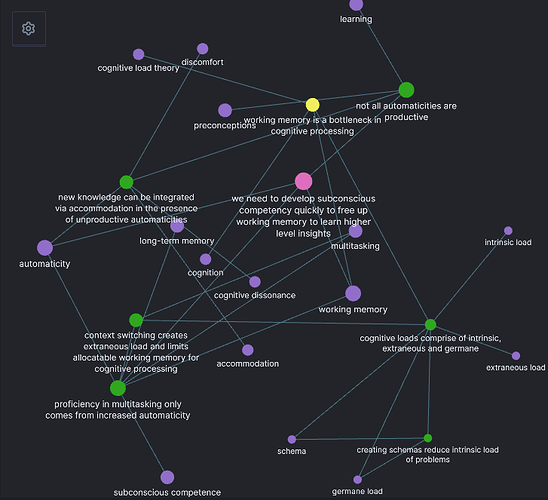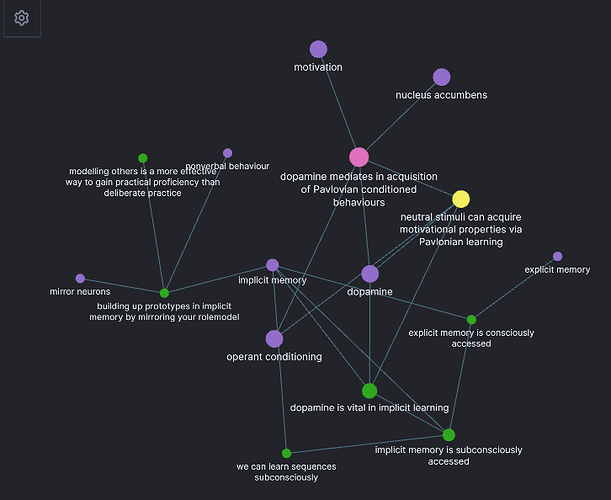From experience, resurfaceability increases in real-time when you combine the process of input with output. For example, when we learn about anything in the world, it is in the form of five sense data. If we see something, the brain processes it, recognises it, then fits it into a framework that triggers a concept. It might trigger “apple”.
But the issue with this isn’t that [[apple]] looks red. Instead, the [[apple]] itself is linked to the past with a memory of a [[good taste]], [[crunchy texture]], used in [[apple pies]], [[apple strudels]], and so on.
To pull all of these other concepts into the same context of [[apple]] looks red would require some sort of presentation of these second-degree connections. We need to be able to display connections more than 1 degree deep in association. Here are some examples of how going more than 1 degree deep on the graph view makes things connectable during the input process:
I hope to start a revolution with the local graph view. It is severely underestimated, probably because a lot of people come from outliners and are used to text representation over seeing things displayed in a non-linear form. The “graph analysis” plugin is awesome because it shows more than 1 degree deep, but it’s a different ‘muscle’ to exercise which takes some time to get used to.
I made a short video here: How To Use Local Graph View In Obsidian - YouTube showing how I currently do this in realtime (currently, because it’s a work-in-progress and I find new ways to improve the workflow as I use it).
First-degree associations? Too primitive. No wonder old links get lost… It’s almost like we’re halving our natural ability to output as we input (memories get triggered whenever we make an input), just to mechanically focus on one single phase of input versus output at any one time.
If you want to give it a try, welcome to the graph gang. When more people come onboard, demand arises; when demand arises, there will probably be more innovation into this area. Of course there are some things that must change as you shift towards heavy-graph-usage:
- Note titles must be a good summary of the content, and notes have to be somewhat atomic in nature
- Probably will require some kind of hierarchy of notes - I use #note/capture > #note/observation > #note/synthesis and filter my graph view accordingly. I normally filter out #note/capture these days.
- I use breadcrumbs plugin’s “threading mode” to easily extend ideas quickly with the shortcut and build hierarchies if required.

